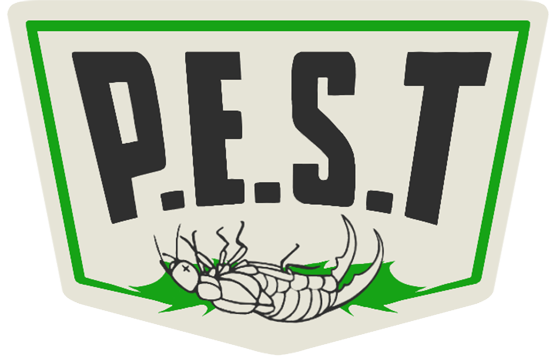Pest infestations can vary significantly with the change of seasons, making year-round vigilance and control essential for maintaining a pest-free environment. This section will explore the behavior of pests across different seasons and highlight the importance of continuous pest management.
Different pests thrive in different climatic conditions, and their activity peaks can correspond with seasonal changes. For instance, during the spring, pests like earwigs and beetles begin to emerge, drawn out by the warmer temperatures. Summer often sees an increase in bioactivity where pests such as silverfish might invade homes seeking cooler environments as outside temperatures rise. Conversely, fall and winter drive pests indoors in search of warmth and food, heightening the risk of infestations of various critters that would otherwise remain hidden. Understanding these patterns is crucial for preempting potential infestations and addressing them before they become a significant problem.
Premier Extermination Solutions Team (P.E.S.T.) implements several preventative strategies tailored to the particular challenges presented by each season. In spring, proactive measures include sealing entry points identified during warmer weather when pests start to become active. In the summer, increased surveillance and barrier protections are essential, especially in areas where food is stored, to combat the influx of pests trying to escape the heat. During the colder months, P.E.S.T. focuses on fortifying home exteriors against potential entry points for small pests seeking shelter. These targeted actions ensure that pest activity is controlled before it can escalate into a more severe problem.
Spotlight On Common Pests
Three less commonly discussed but equally troublesome pests found in Indiana homes and businesses are silverfish, carpet beetles, and earwigs. Understanding these pests' behaviors, attractions, and risks can help in effectively managing and preventing their infestations.
- Earwigs are easily recognizable by their pincers at the ends of their abdomens, which they use for defense and mating rituals. Contrary to popular myth, they do not crawl into human ears. These nocturnal insects prefer moist and dark environments and are often found in gardens where they feed on plants and other insects. While earwigs are not harmful to humans or pets, they can become a nuisance if they enter homes, seeking shelter during dry weather. Managing moisture around the home by repairing leaks and ensuring proper drainage can help deter earwigs from moving indoors.
- Carpet beetles are small, oval-shaped insects that can cause significant damage to fabrics, carpets, and upholstered furniture. They primarily feed on natural fibers, including wool, silk, feathers, and leather, making them a concern for homeowners. The larvae, which are responsible for most of the damage, are tiny and often go unnoticed until significant harm has occurred. Regular vacuuming, dry cleaning of garments, and immediate attention to spills and stains can help prevent infestations. Additionally, keeping dried flower arrangements and natural fiber decorations clean and pest-free is crucial in managing these pests.
- Silverfish are slender, silver-colored insects known for their quick movements and love of carbohydrates, such as sugar, cellulose, and starch. They thrive in damp, cool places and can commonly be found in bathrooms, basements, and attics. Silverfish are particularly problematic because they feed on books, wallpaper, insulation, and clothing, potentially causing considerable damage over time. To prevent silverfish infestations, reduce humidity in your home through the use of dehumidifiers and fans, repair leaky pipes and vents, and store valuable books and papers in dry, airtight containers.
Economic Benefits Of Preventative Pest Control
Investing in preventative pest control is not only crucial for maintaining hygiene and safety but also provides significant economic benefits. This section explores how such proactive measures can lead to substantial cost savings, help in preserving the value of properties, and ensure continuous business operations without disruptions from pest-related issues.
The initial investment in preventative pest control can significantly reduce the potential for future expensive damage and infestations, which are much more costly to address once established. For example, pests like silverfish and carpet beetles can cause severe damage to paper goods, clothing, and furnishings, leading to costly replacements and repairs.
For homeowners and commercial property owners alike, the presence of pests can drastically reduce a property’s market value. Issues such as structural damage from pests, such as weakened wooden structures due to pest infestations, or health risks associated with pests can deter potential buyers and lower property appeal.
For businesses, particularly those in the food service and hospitality industries, pest infestations can lead to severe disruptions. These disruptions can range from temporary closures required to manage an infestation to the loss of customer trust and ultimately, revenue. Effective pest control measures ensure that businesses operate without interruptions.
We encourage homeowners and business owners to contact us to learn more about our services and how we can help ensure your property remains pest-free. Scheduling a consultation with one of our knowledgeable pest control professionals is the first step towards a safe and secure environment. Our team is ready to assess your situation, provide detailed information on potential threats, and create a customized pest control plan that suits your unique circumstances.
Frequently Asked Questions
Q1: What are the most common insect pests found in homes in Northern Central Indiana?
A1: In Northern Central Indiana, some of the most common insect pests include ants, particularly carpenter ants and odorous house ants, which invade homes looking for food or shelter. Spiders, such as the common house spider and the black widow, are also frequent household pests. Additionally, bed bugs and cockroaches are prevalent in residential and commercial environments, often requiring professional treatment to effectively manage.
Q2: How can I prevent common insect pests from entering my home?
A2: Preventing insect pests starts with sealing entry points around your home, such as gaps around doors, windows, and where utility lines enter. Maintaining cleanliness by regularly vacuuming and disposing of garbage can also deter insects by limiting food sources. Additionally, controlling humidity levels by fixing leaks and ensuring proper ventilation can prevent the moist environments that many pests, like cockroaches and certain types of ants, find attractive.
Q3: Are the chemicals used to treat insect infestations safe for my family and pets?
A3: Yes, the chemicals used in professional pest control treatments are selected and applied with strict adherence to safety regulations to ensure they are safe for humans and pets. However, it's important to follow all recommendations from your pest control provider regarding reentry times and any specific precautions. For extra peace of mind, many companies offer eco-friendly and pet-safe options that are highly effective at controlling pests with minimal environmental impact.
All Rights Reserved | Premier Exterminating Solutions Team

